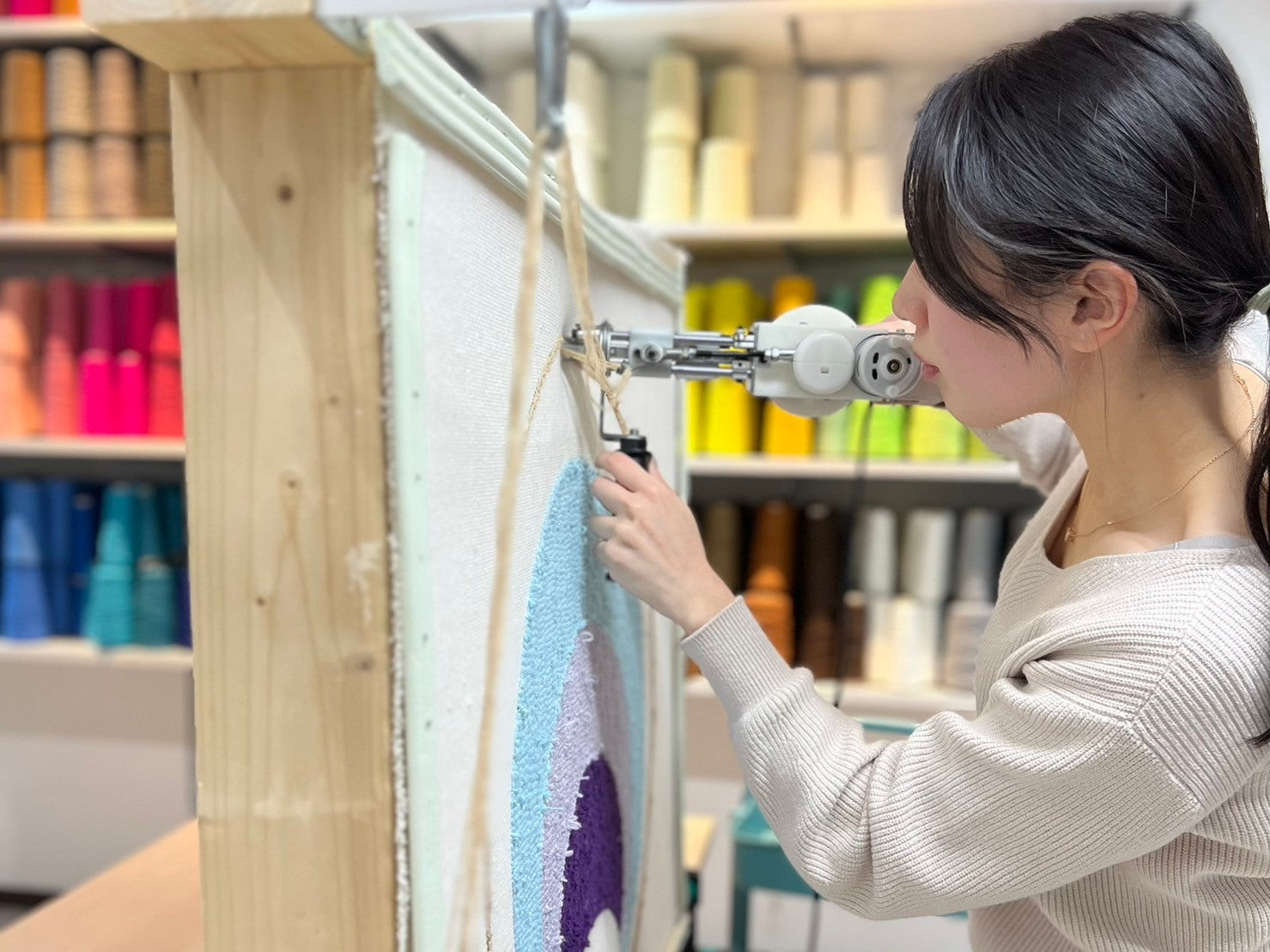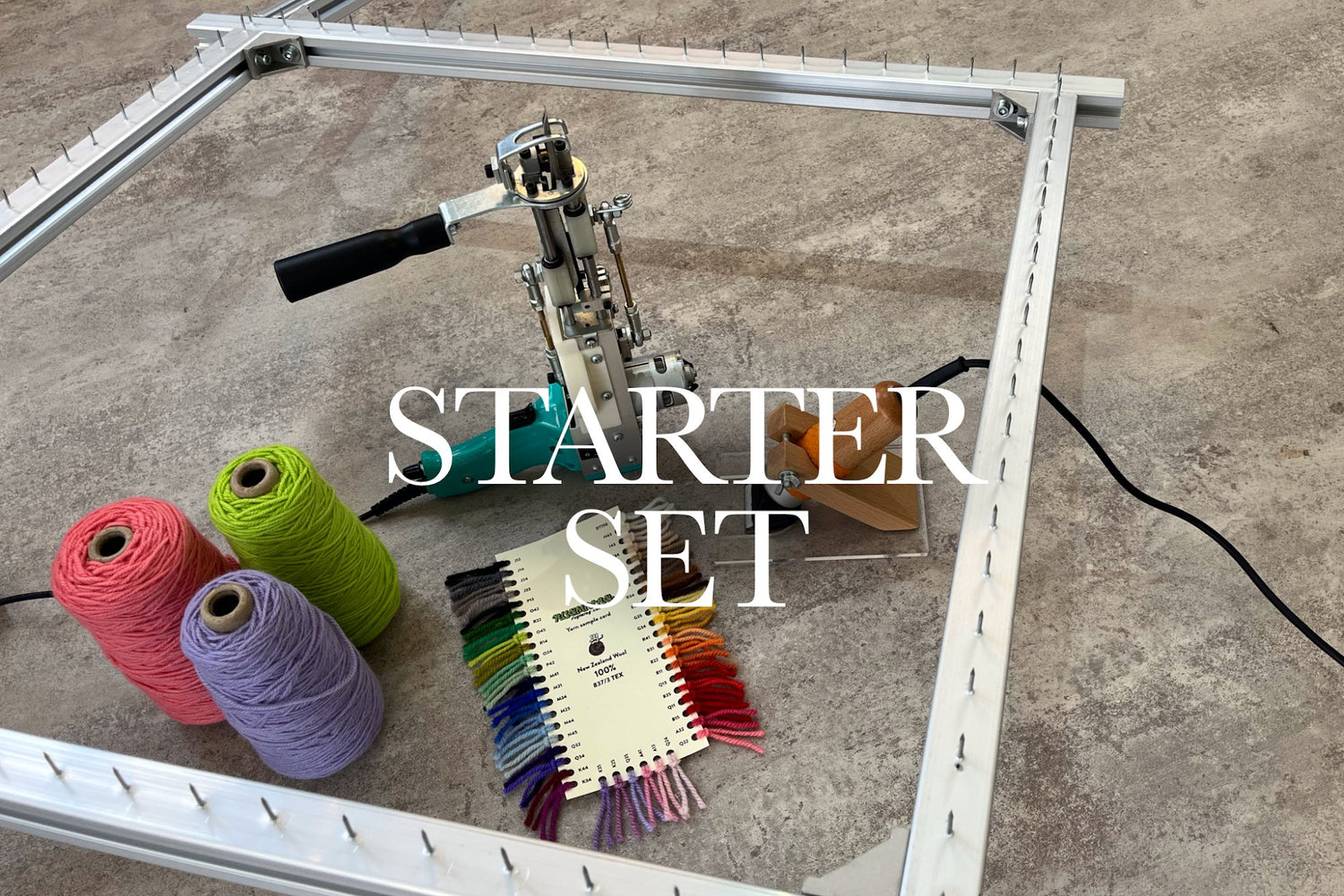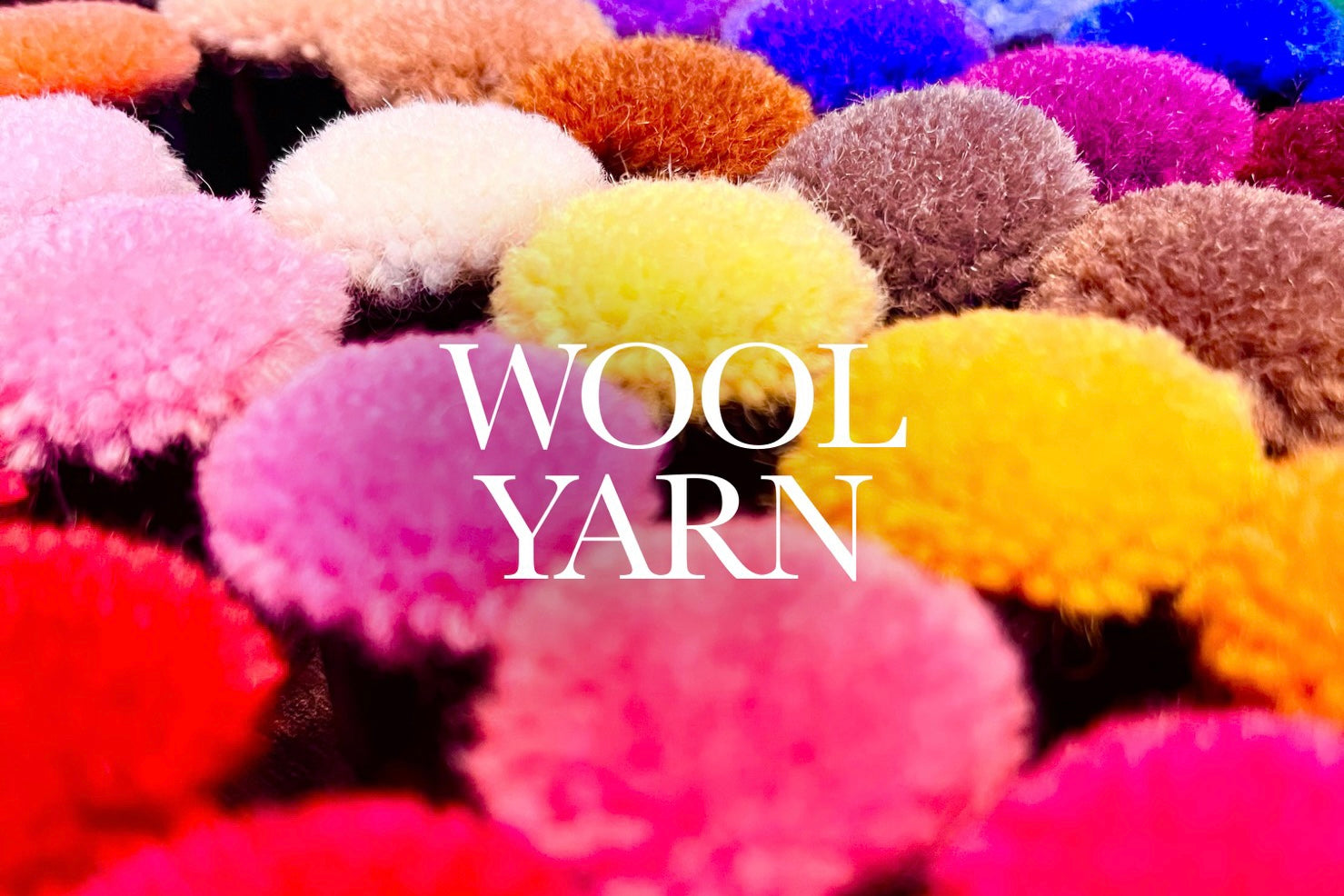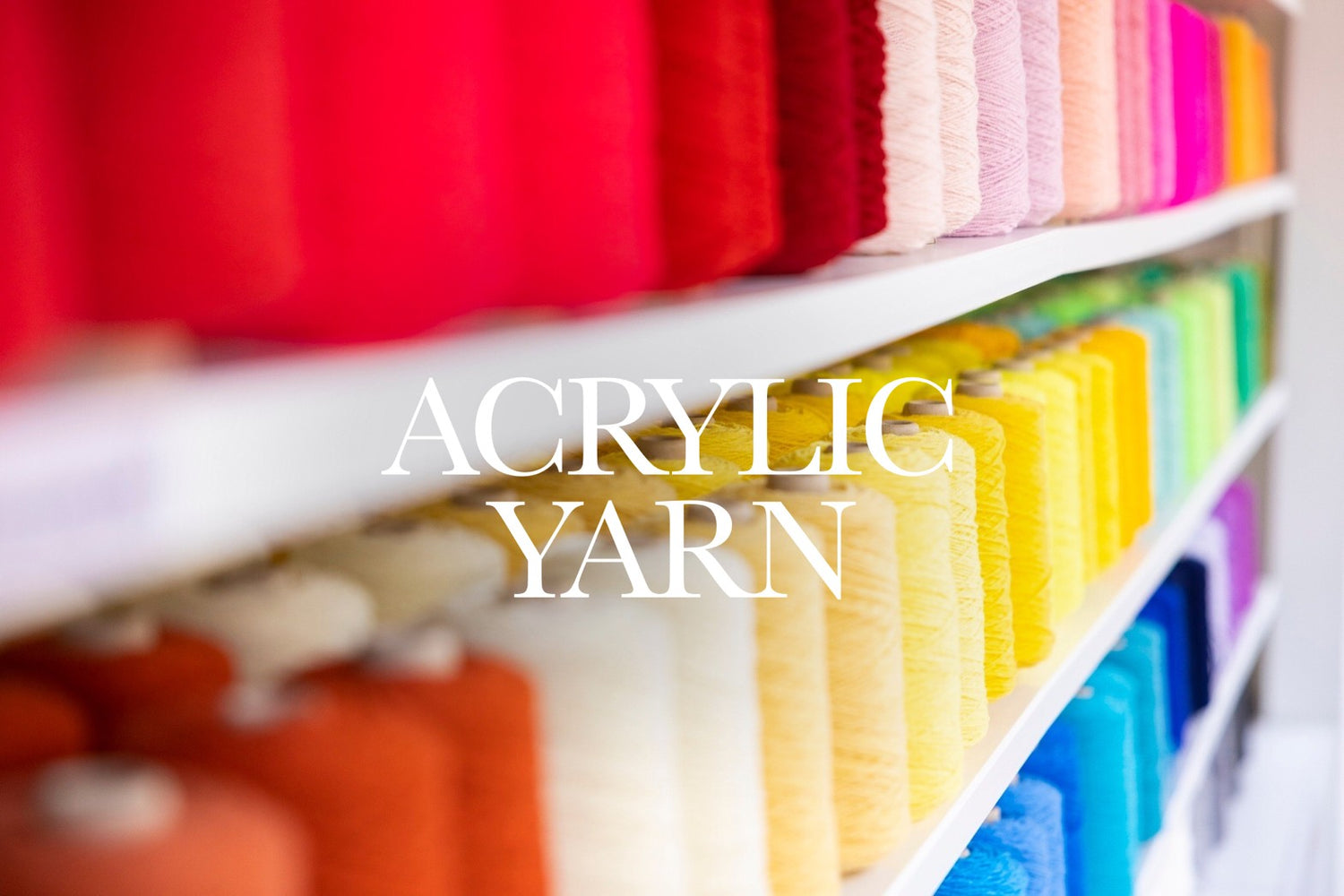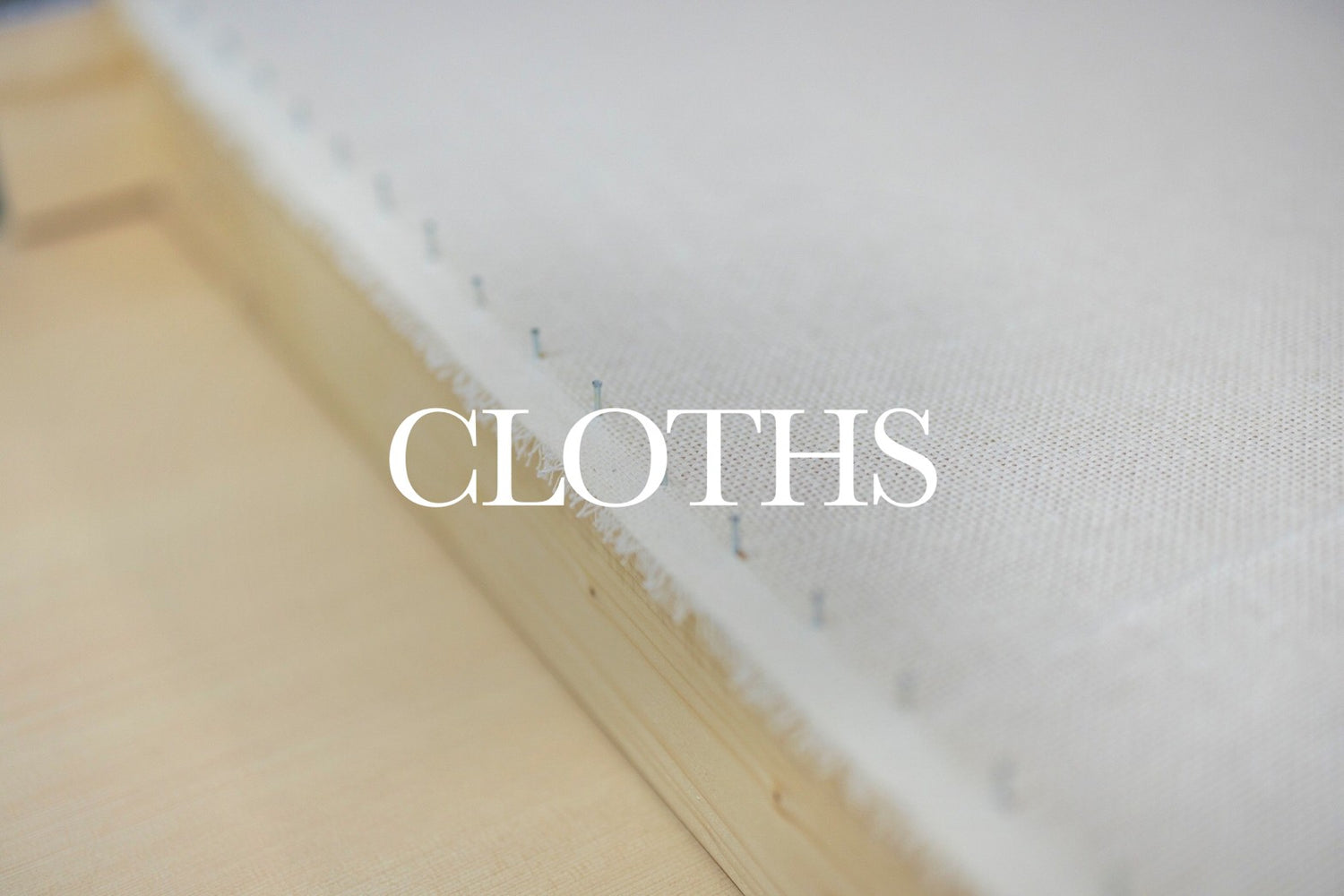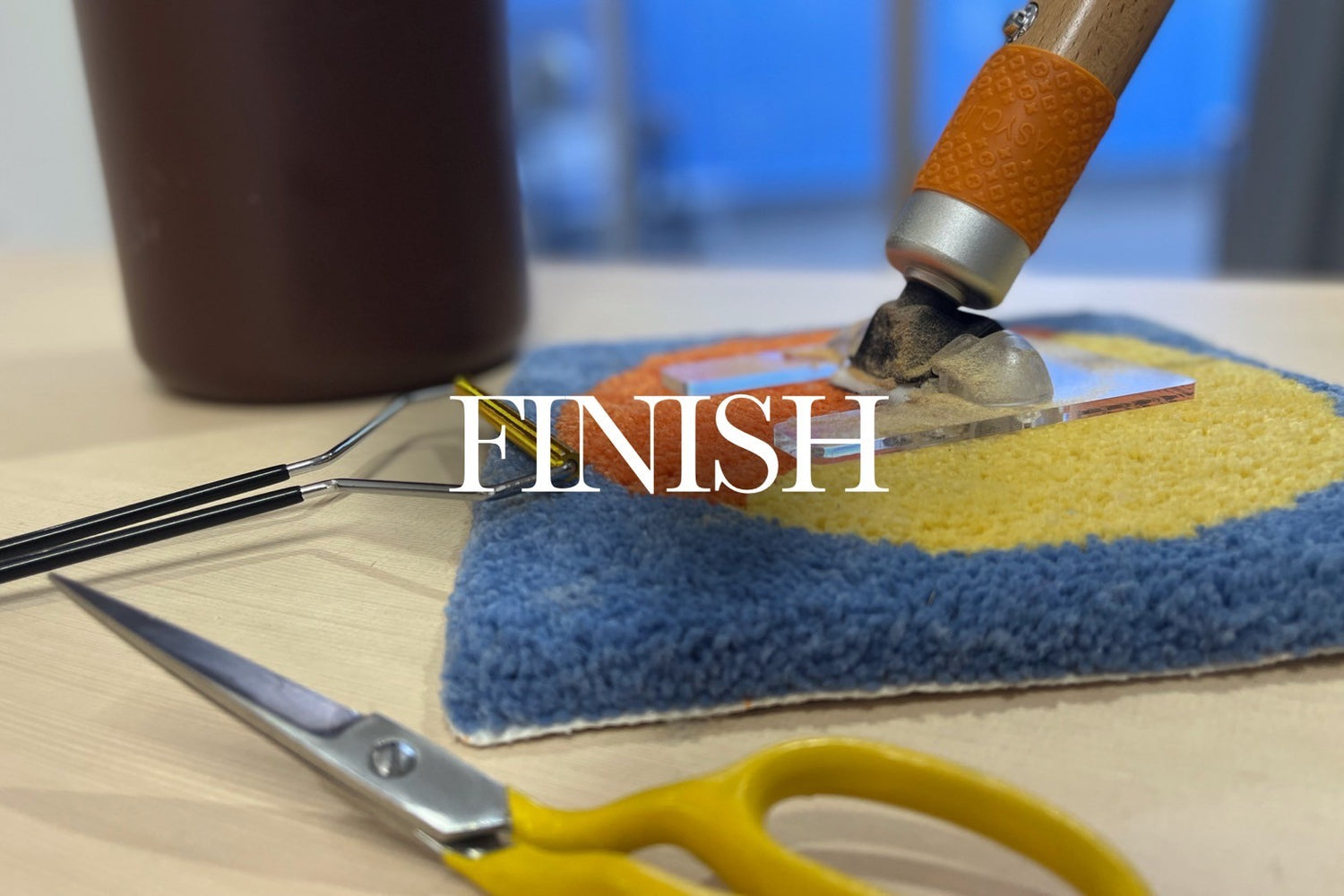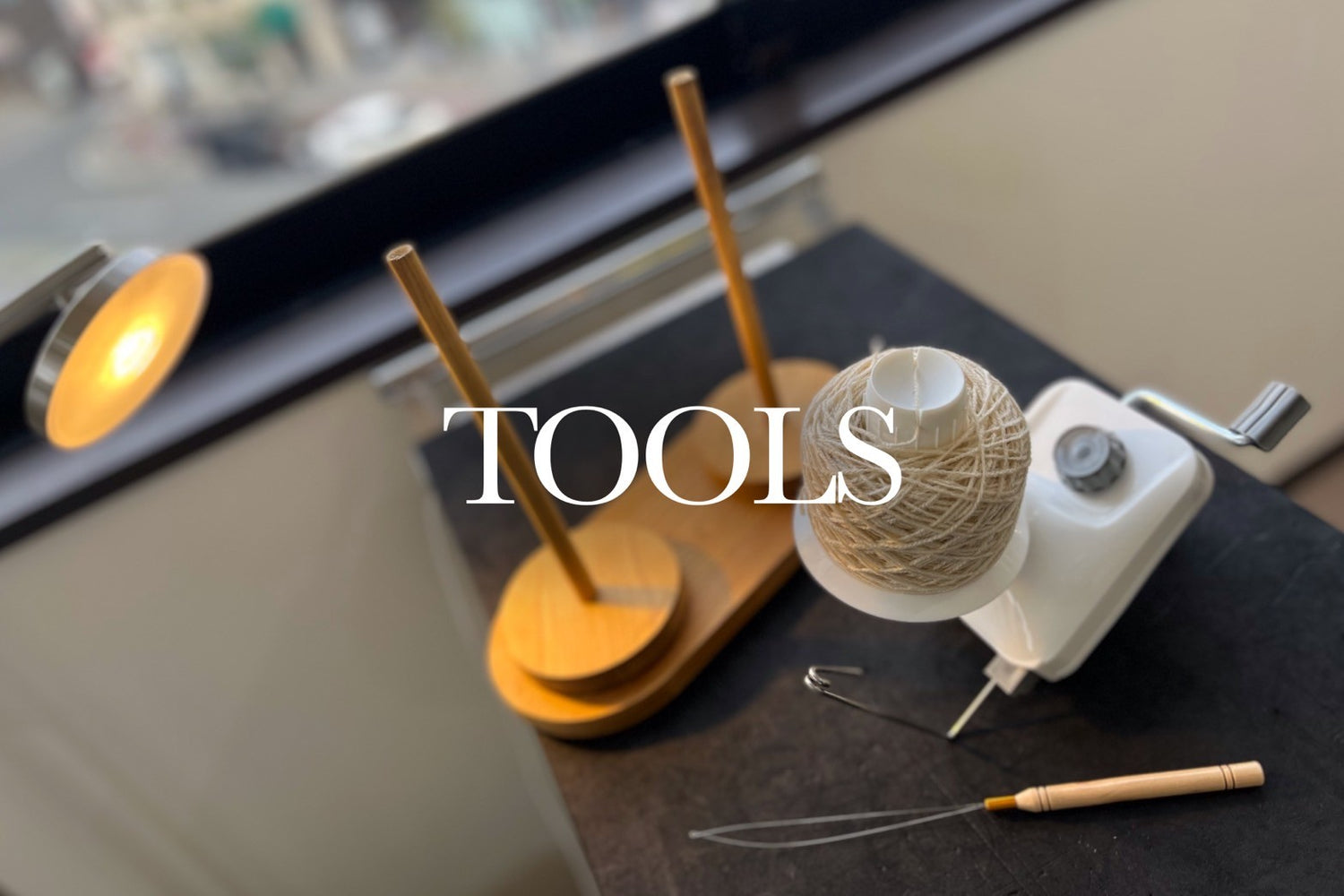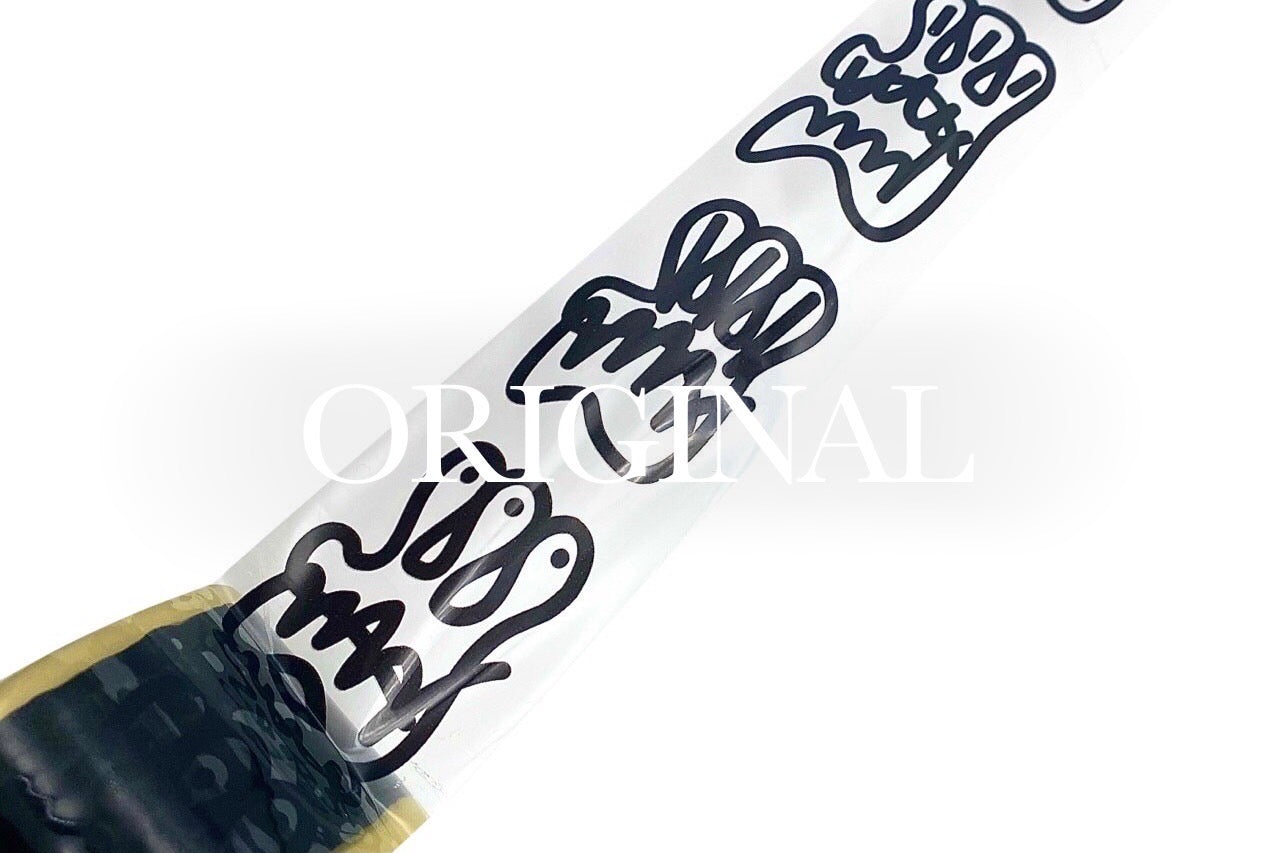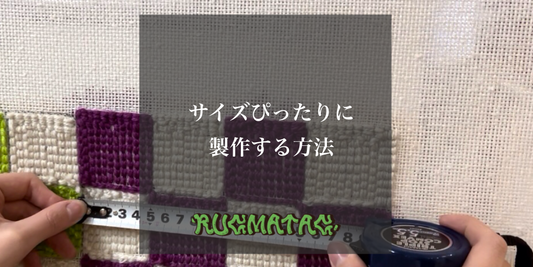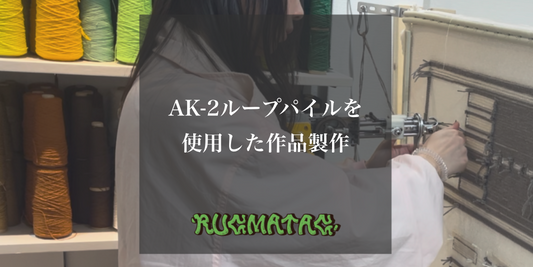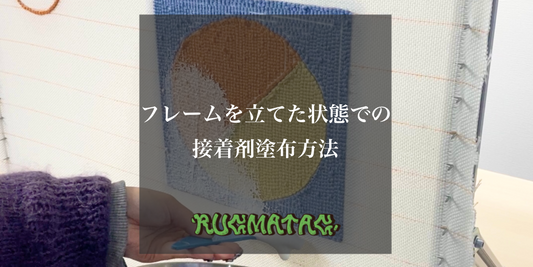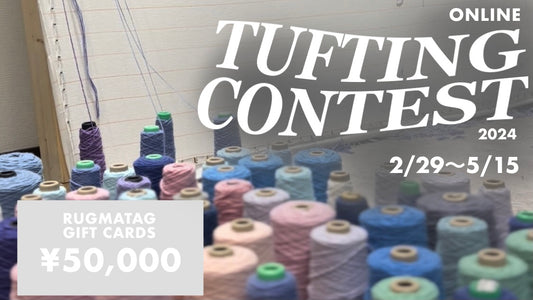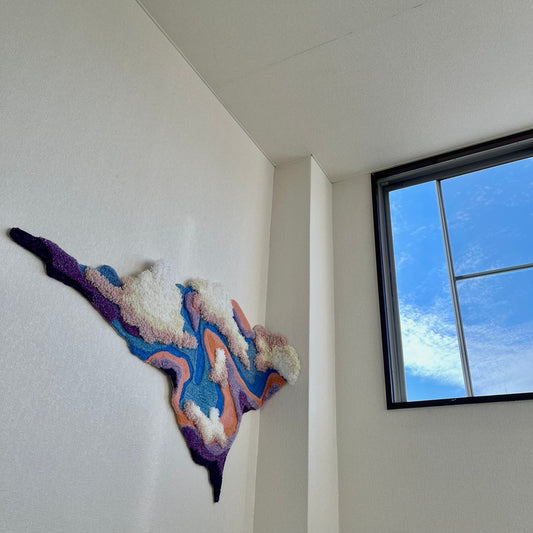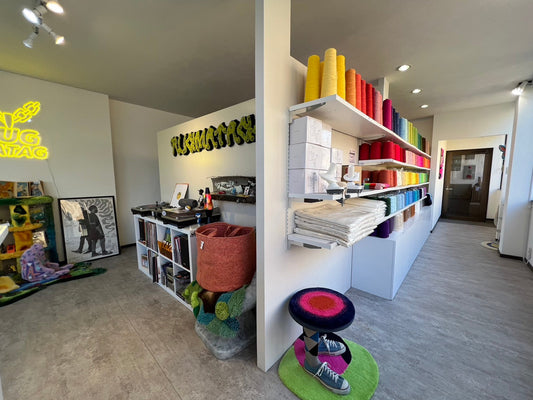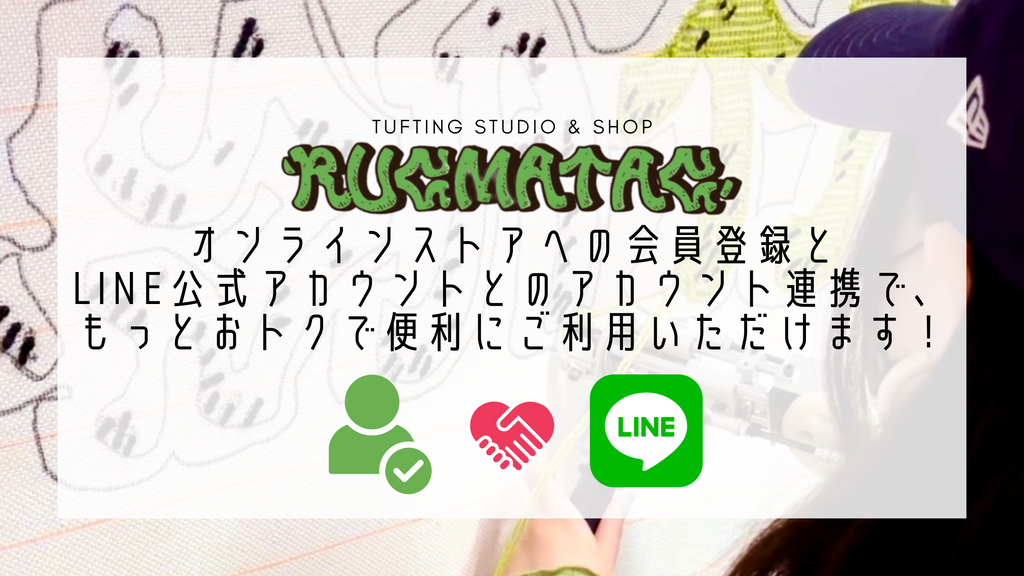Hello. We are Tufting studio & shop RUGMATAG, which operates a tufting workshop and a specialty store for equipment and materials in Morinomiya, Osaka .
Have you ever started tufting but wondered, ``Which thread is suitable for tufting?'' ``I bought one to try it out, but I can't get it to work...'' This time, we will introduce how to choose the thread suitable for tufting and the types of winding methods.
Type of yarn
If you are making a rug using a mainstream home tufting gun (e.g. AK-1), acrylic yarn or wool yarn is suitable. Many cotton and synthetic yarns are difficult to cut with a home tufting gun, and this can cause the tufting gun to malfunction, so be careful. Instead of buying a lot at once, buy in small quantities to see if it's compatible with your tufting gun.
We recommend using yarn sold as "for tufting," but you can also use other yarns for crafts instead. However, depending on the product, the tufting gun may not hit properly or cut properly, and the tufting gun may malfunction due to this.
Also, the thickness of the yarn needs to match the size of the thread hole in the tufting gun. It is necessary to adjust the number of yarns used at one time according to the thickness. For example, if the yarn is medium thick, two yarns are suitable for a typical home tufting gun. Adjust the number according to the thickness of the yarn you are using.
*The yarn sold at our store is yarn for rugs that is actually used by rug companies. It is suitable to use 2 strands for wool, and 4 to 6 strands for MIYOSHI RUG acrylic (we use 5 strands at our store).

Difference between acrylic and wool
Acrylic and wool are commonly used materials for rugs. Each has its own charm, so I will briefly explain them.

acrylic
Good coloring, softness, and easy long-term storage of yarn

wool
Natural fiber, luxurious, not easy to wear out
Difference between thin yarn and thick yarn
Thick yarn with 1 to 3 strands
Preparation and handling are easy and simple as only a small number of yarns are used at a time. Also, it is easier to express the color boundaries clearly by processing with clippers or scissors. Depending on the material and the length of the bristles, you may end up with gaps if you don't press the bristles a little closer together.
Thin yarn of about 4 to 6 pieces
Preparation can be difficult because there are many yarns to use at one time. By gradually mixing different colors, it becomes easier to create expressions such as gradations. It depends on the material and the length of the bristles, but even if you don't press it too tightly, the gaps will not be noticeable.
Type of wrapping
There are several ways to roll it, such as tawara-maki, tamamaki, and corn-maki. We will explain the characteristics and differences of each. There are also winding methods that are suitable for tufting, so please refer to them.
Tawaramaki
Commercially available handicraft rolls are difficult to use as they do not allow the thread to come out smoothly, so we recommend that you use a ball winder to make them into balls.
*We recommend the Daruma ball rolling machine that we also sell at our store.
Ball roll
When a small amount of rolled yarn is used, it tends to roll around easily, so placing it in a small basket will make it easier to handle. Please note that rolled yarn cannot be used in a cone stand.
corn roll
Ideal for tufting is cone wrapping. Tufting uses a large amount of yarn, so if you wind it in straws or balls, it will run out quickly, so it will definitely be more labor-intensive. Cone wrapping eliminates that hassle, so cone wrapping is recommended for those looking for more efficient work time. If you are making corn rolls, it will be easier to use if you have a corn stand.
Please choose according to your environment.

summary
This time I explained the types of thread and the different ways to wind them. We hope that by choosing the right yarn for tufting, your tufting life will be as rich as possible without any trouble.
Until the end Thank you for reading. RUGMATAG plans to continue posting various articles about tufting in the future. We plan to regularly notify you of new information on Instagram , Twitter , LINE official account , email newsletter (see below), etc. If you are interested, please follow us on social media, add friends to our official LINE account, and sign up for our email newsletter.


